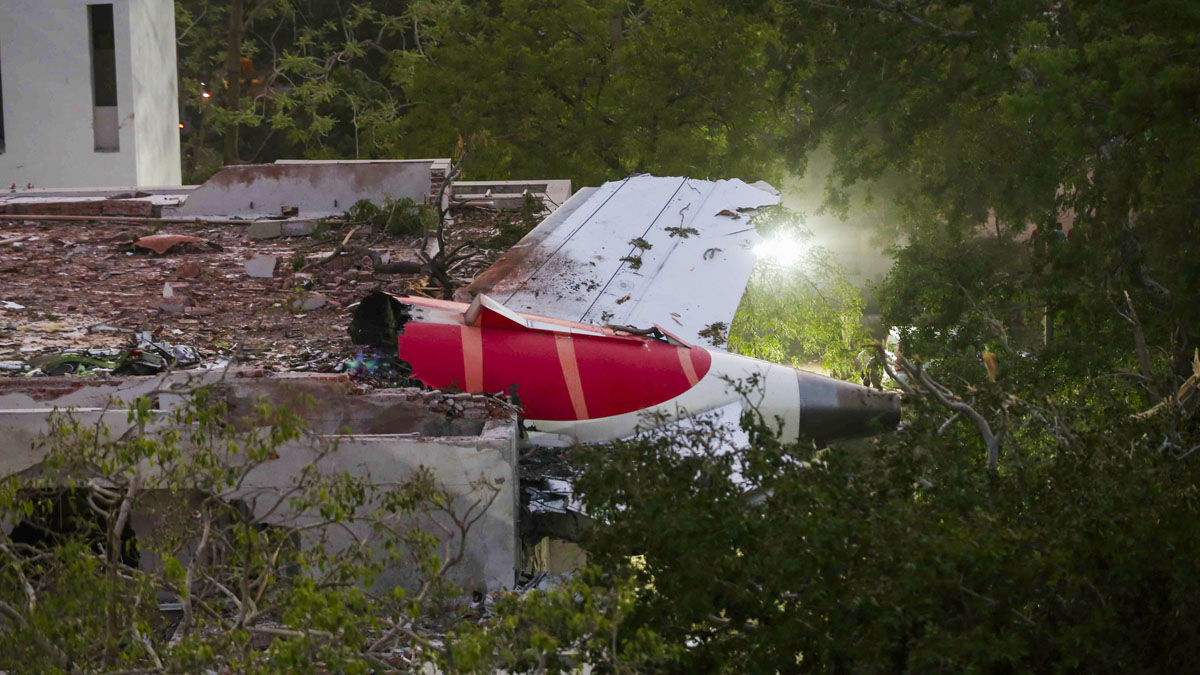Is the fuel switch a cover-up for the real reason behind AI 171 crash?
 **EDS: FILE IMAGE** Ahmedabad: In this Thursday, June 12, 2025 file photo, wreckage of the Air India plane that crashed moments after taking off from the Ahmedabad airport, lies on a building, in Ahmedabad. Both switches feeding fuel to the two engines of Air India flight 171 were cut off followed by pilot confusion before the plane crashed in Ahmedabad, seconds after taking off, the first investigation report into the crash has revealed. (PTI Photo) (PTI07_12_2025_000001B)
**EDS: FILE IMAGE** Ahmedabad: In this Thursday, June 12, 2025 file photo, wreckage of the Air India plane that crashed moments after taking off from the Ahmedabad airport, lies on a building, in Ahmedabad. Both switches feeding fuel to the two engines of Air India flight 171 were cut off followed by pilot confusion before the plane crashed in Ahmedabad, seconds after taking off, the first investigation report into the crash has revealed. (PTI Photo) (PTI07_12_2025_000001B)
“Nobody in their right mind will turn the fuel cut-off switches at 400 feet!,” a prominent senior pilot told this correspondent Saturday afternoon, pointing to the AAIB interim report pointing fingers, without pointing fingers, at the pilots of the ill-fated Air India 171 flight.
The AAIB report release has led to speculation that one of the two pilots, either by mistake or purposely, pulled the fuel cut-off switch, thereby cutting off the flow of fuel to both the engines leading to the catastrophic crash.
This has led to sharp reaction from the pilots fraternity, with the Airline Pilots Association of India (ALPA) even releasing a press statement casting doubt on the entire investigation, as well as pointing out to a warning issued earlier regarding the fuel control switches malfunctioning.
The fuel switch, situated in the cockpit, is unmistakable, with later versions of Boeing planes having protective barriers also around it, to ensure that it is never switched on by mistake. Any which ways, the process involves pulling the switch out and lowering it down, sort of like an emergency lever, to make it functional, making it virtually foolproof, at least to errors.
This leaves just two options left — either the pilot, or pilots, pulled it to deal with an emergency situation within the plane, or one of them did it deliberately with malafide intention.
In fact, aviation expert Captain Mohan Ranganathan quoted by broadcaster NDTV suggested that the crash may even have stemmed from the deliberate actions taken in the cockpit, even suicide.
But what if it was something more likely, that there was a systems emergency within the plane that made them do it?
The seasoned aviator THE WEEK spoke to, who did not want to be named, veers to the latter theory. He believes that the report missed out on an important element from Boeing’s ‘memory items’, the critical list of actions that pilots are trained to perform from their memory when specific emergency situations develop, instead of going through their check-list or flight manual. The item to do when there is an engine stall or problem with fuel is to quickly turn the fuel switch off and on — or to use the right terminology, turn it to CUT OFF and then turn it to RUN. And repeat the action to reignite combustion in the engine.
But there is a crucial stipulation to this action: it has to be performed at or above 400 feet only.
Now, while the height of 625 feet being the highest the plane could get before it spiralled to disaster, what many have not realised is that Ahmedabad’s elevation itself is 200 feet above mean sea level. Which means, in reality, the plane barely reached up to 400 feet, and another 25 feet, before it started falling.
Which would have given the pilots barely any time to action on the memory item — considering there was a situation aboard whereby engines had stalled (now corroborated by the AAIB report), and yet, that could be exactly what happened.
“If one of the pilots turned the fuel switch to CUT OFF a few seconds after take-off, and then turned it on again within a minute after mentioned in the report, couldn’t they have been just following the Boeing manual trying to restart the engines after some sort of failure that had already happened. The enquiry needs to find out the real reason and what exactly happened — whether there was an electrical or some other sort of systems failure within the plane during those fateful seconds (as obviously evidenced from videos just before the crash that the RAT, an emergency automatic operation to supply power when a sudden power failure happens) and whether those could be the real reason for the crash,” the pilot said.
India